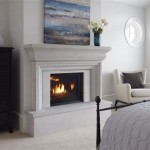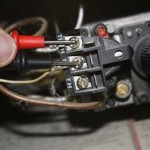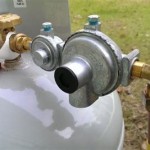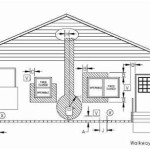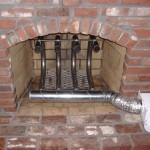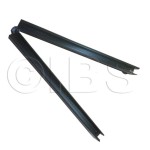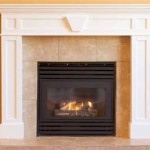```html
Can You Mount A Flat Screen TV Above A Gas Fireplace?
The question of whether to mount a flat-screen TV above a gas fireplace is a common one, sparking debate among homeowners, interior designers, and installers alike. While aesthetically appealing, the decision requires careful consideration and a thorough understanding of potential risks and necessary precautions. Several factors, including heat exposure, viewing angles, and structural integrity, must be evaluated to ensure both the longevity of the television and the safety of the installation.
Mounting a television above a gas fireplace presents unique challenges compared to mounting it on a standard wall. The primary concern revolves around heat. Gas fireplaces, even those considered "cool touch," radiate heat, which can damage sensitive electronic components within the television. Prolonged exposure to excessive heat can lead to screen discoloration, component failure, and ultimately, a shortened lifespan for the TV. Therefore, understanding the heat output of the fireplace and the television's heat tolerance is crucial.
Beyond heat, the viewing angle and the potential for neck strain must be considered. Placing a television too high can result in uncomfortable viewing experiences, particularly for extended periods. The installation process itself also presents logistical obstacles. Ensuring proper structural support, concealing cables, and complying with local building codes are all essential aspects of a successful and safe installation.
Understanding Heat Exposure and Mitigation
The most significant concern regarding mounting a television above a gas fireplace is the potential for heat damage. Heat rises, and the area directly above a fireplace can experience significantly higher temperatures than the rest of the room. This heat can degrade the internal components of the television, leading to premature failure. The specific temperature threshold for damage varies by television model, but consistent exposure to temperatures exceeding the manufacturer's specifications will undoubtedly shorten the TV's lifespan.
Several factors influence the amount of heat radiating from a gas fireplace. These include the fireplace's BTU (British Thermal Unit) rating, the presence of a mantel, and the distance between the fireplace and the intended television mounting location. Fireplaces with higher BTU ratings produce more heat. A mantel acts as a barrier, deflecting heat upwards and away from the wall. The greater the distance between the fireplace and the television, the less direct heat exposure the TV will experience.
Mitigation strategies are essential to protect the television from heat damage. A mantel is the most effective passive heat shield. A deep mantel can significantly reduce the amount of heat reaching the wall above the fireplace. If a mantel is not present or is insufficient, consider installing a custom-built heat shield. These shields are typically constructed from non-combustible materials like metal or stone and are designed to deflect heat away from the television.
Another mitigation strategy involves using a specialized television mount designed for above-fireplace installations. These mounts often incorporate features that improve ventilation and allow for some degree of adjustability, enabling users to lower the TV for optimal viewing angles. Some mounts also include built-in heat sensors that can trigger an alarm if the temperature exceeds a predetermined threshold.
Furthermore, consider the frequency and duration of fireplace use. Using the fireplace sparingly, especially during warmer months, can reduce the overall heat exposure to the television. Regularly monitoring the temperature above the fireplace, using a simple thermometer, can provide valuable data and help inform decisions about fireplace usage.
Addressing Viewing Angle and Ergonomics
Beyond heat, viewing angle is another crucial factor to consider. Mounting a television too high can lead to neck strain and an uncomfortable viewing experience. The ideal viewing angle is generally considered to be at or slightly below eye level when seated. Placing the television significantly above this angle forces viewers to tilt their heads upwards, which can cause muscle fatigue and discomfort, particularly during extended viewing sessions.
The height of the fireplace, the height of the seating, and the size of the television all influence the optimal mounting height. Before installing the television, it is essential to simulate the viewing experience. Temporarily prop up the television at the intended mounting height and observe how comfortable it is to view the screen from your usual seating position. This allows for adjustments before committing to a permanent installation.
Adjustable television mounts can help mitigate the viewing angle issue. Tilting mounts allow users to angle the television downwards, improving the viewing angle. Full-motion mounts offer even greater flexibility, allowing users to not only tilt the television but also swivel it from side to side. These mounts are particularly useful in rooms with multiple seating areas or where the viewing angle needs to be adjusted based on the number of viewers.
Consider the overall room layout when determining the optimal television height. If the seating is relatively close to the fireplace, a lower mounting height may be feasible. However, if the seating is further away, a slightly higher mounting height may be necessary to ensure that the screen is easily visible. The size of the television also plays a role. Larger televisions can often be mounted slightly higher without sacrificing viewing comfort.
Prioritizing ergonomic comfort is essential. Avoid placing the television so high that it requires constant head tilting. Experiment with different mounting heights and viewing angles to find the optimal configuration for your specific needs and preferences. Consulting with a professional installer can provide valuable insights and ensure that the television is mounted at a comfortable and ergonomic height.
Ensuring Structural Integrity and Safe Installation
The installation process itself presents several challenges. Ensuring proper structural support, concealing cables, and complying with local building codes are all essential aspects of a safe and successful installation. The wall above a fireplace may not be as structurally sound as a standard wall. Fireplaces often have brick or stone surrounds, which can make it difficult to securely attach the television mount.
Before starting the installation, it is crucial to identify the wall's framing. Use a stud finder to locate the wooden studs behind the drywall. These studs provide the necessary support for the television mount. If the studs are not ideally located, additional framing may be required to provide a secure mounting surface. In some cases, it may be necessary to install a horizontal ledger board across multiple studs to distribute the weight of the television.
Concealing cables is another important consideration. Running cables behind the wall creates a cleaner and more aesthetically pleasing look. However, this requires careful planning and execution. Use in-wall rated cables to prevent fire hazards. Install cable management systems, such as cable ties and channels, to keep the cables organized and prevent them from becoming tangled. Ensure that the cables are not pinched or stressed, as this can damage them and affect their performance.
Complying with local building codes is essential. Some jurisdictions have specific regulations regarding electrical wiring and the installation of electronic devices near fireplaces. Obtain the necessary permits before starting the installation to ensure that you comply with all applicable codes. A qualified electrician can provide valuable assistance in ensuring that the electrical wiring is safe and compliant.
If you are not comfortable performing the installation yourself, it is best to hire a professional installer. A professional installer has the experience and expertise to ensure that the television is mounted safely and securely. They can also provide guidance on choosing the right mount, concealing cables, and complying with local building codes. While hiring a professional installer may incur additional costs, it can provide peace of mind and ensure that the installation is done correctly.
Furthermore, it is important to consider the weight capacity of the wall mount. Ensure that the mount is rated to support the weight of the television. Exceeding the weight capacity of the mount can lead to failure, potentially causing damage to the television and injury to anyone nearby. Choose a mount that is specifically designed for the size and weight of your television.
```
Can I Mount My Tv Above The Fireplace
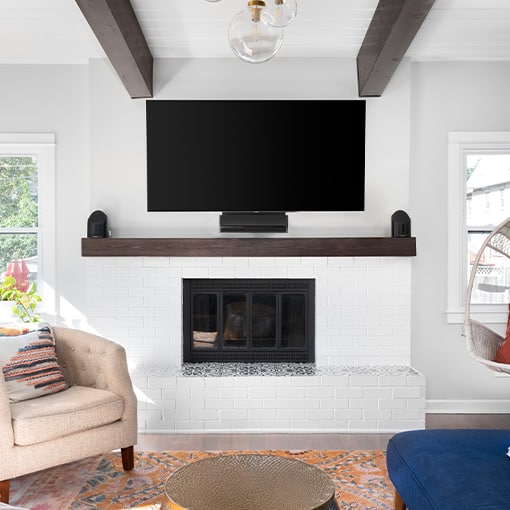
Can I Mount My Tv Above The Fireplace

ᑕ❶ᑐ What To Consider Before Mounting A Tv Above Fireplace

ᑕ❶ᑐ What To Consider Before Mounting A Tv Above Fireplace

3 Myths About Mounting Tvs Over Fireplaces Monmouth County

Everything You Need To Know About Tv Mounts For Fireplaces

Mounting A Tv Over The Fireplace Common Myths Busted Cepro

Installing A Tv Above The Fireplace

Can I Mount A Tv Over My Fireplace Warming Trends

Mounting A Tv Over Fireplace Hearthcabinet
Related Posts

